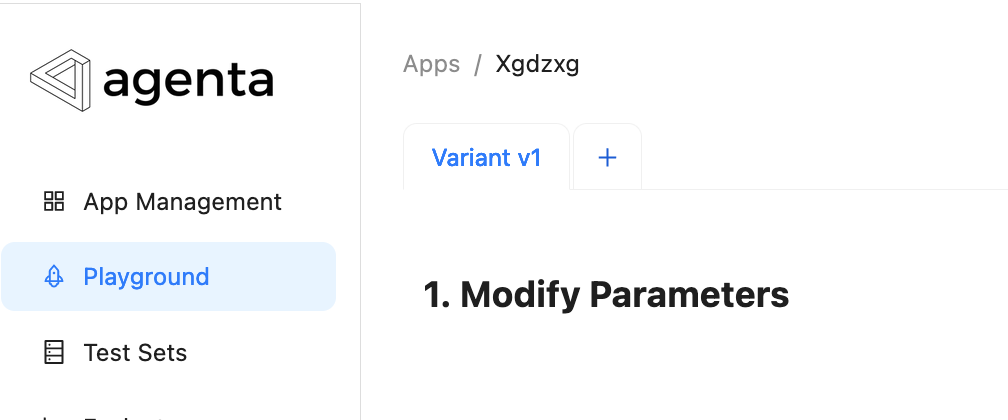Compare Different LLM App Variants
This guide will walk you through how to create and compare multiple variants of your LLM app.
Creating LLM App Variants
Why Create Multiple Variants?
To build reliable LLM apps, it’s essential to test various parameters and strategies systematically. Agenta makes it easy to create and evaluate different variants of your LLM app.
What Are LLM App Variants?
An LLM app variant is a unique version of your app that can differ in architecture or code changes. For more details, check the concept guide. For example, a Q&A app might have one variant using an embedding workflow and another using a map-reduce workflow.
A variant could also be a different configuration of the same app. You might have two variants that use different prompts or models.
How to Create Multiple Variants?
You can create variants either through code or via the UI.
Creating a New Variant Using the UI
To create a new variant from the UI, click the ’+’ symbol on the Playground tabs.

Click on the '+' button in Playground to create new variants
Variants added through the UI can only change parameters that exist in the original variant or have been specified in your code.
Creating a New Variant Using Code
To create a variant via code, add a new Python script in your project folder (the one where you ran agenta init). Name the file after your new variant. For example, if your new variant is variant_1, create a file called variant_1.py. Then run the following command:
agenta variant serve --file_name variant_1.py
Navigate to the Playground, and you’ll see your new variant variant_1 available for comparison.
Comparing Variants
Initially, you can compare variants by running them in the Playground to quickly test different configurations.
For more in-depth comparisons, go to the evaluation section. There, you can use various methods such as manual labeling with the A/B testing feature, or automated evaluation (documentation coming soon).
Was this page helpful?

